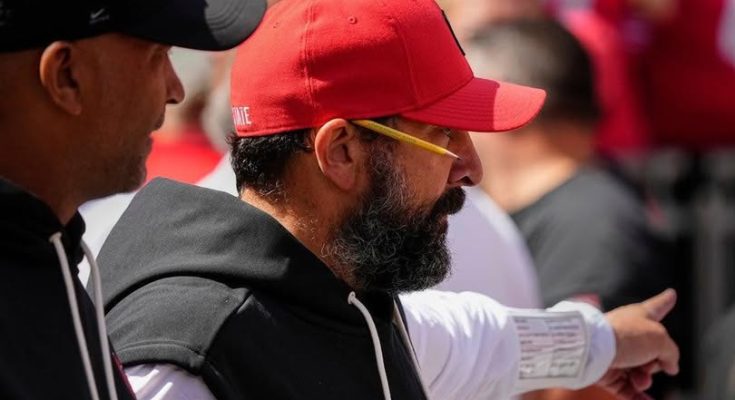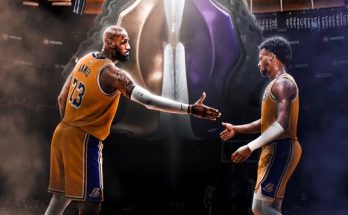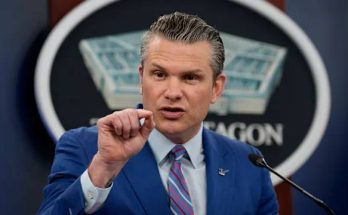Former Super Bowl-winning NFL coach Bill Belichick’s influence in football is legendary, but his opinions about college football have increasingly attracted attention, particularly when he weighs in on high-profile matchups or emerging talent. Recently, in a conversation on Pat McAfee’s popular sports show, Belichick made a startling assertion about the recent clash between the Texas Longhorns and the Ohio State Buckeyes, suggesting that Ohio State defensive coordinator Matt Patricia had “totally bamboozled” Texas quarterback Arch Manning. Given Belichick’s reputation for meticulous game-planning and his historical acumen for reading opposing offenses, his comments naturally raised eyebrows and spurred debates across college football circles about the handling of one of the most hyped quarterback prospects in recent history.
Arch Manning, a member of the legendary Manning football family, entered college football with sky-high expectations. The nephew of Peyton Manning and Eli Manning, Arch has been closely followed by scouts, analysts, and fans since his high school days, where he was considered a prodigious talent with an uncommon combination of arm strength, field vision, and athleticism. His decision to commit to Texas only heightened the attention, as Longhorns fans were eager for him to bring the storied program back into national championship contention. Manning’s freshman season, however, began under the glaring spotlight of skepticism and expectation. The matchup against Ohio State, already considered a marquee season opener, quickly became the measuring stick by which his abilities would be evaluated on a national stage.
In the Pat McAfee show segment, Belichick delved into the specifics of Ohio State’s defensive strategy against Manning, offering insights that only a coach with his level of experience could provide. “Matt Patricia and his defensive staff prepared a game plan that was exceptionally sharp,” Belichick explained. “Arch Manning is an elite talent, there’s no question about that. But the way Ohio State presented looks, disguised pressure, and leveraged their personnel—especially in the secondary—was very difficult for any young quarterback to decipher in a first game at this level. They totally bamboozled him.” Belichick’s choice of the word “bamboozled” emphasized the complete effectiveness of the defensive scheme. This isn’t just typical game-day success; this is a recognition that Ohio State’s preparation forced Manning into decisions and situations he likely had not fully encountered before.
Patricia, formerly the head coach of the NFL’s Detroit Lions and a longtime assistant in New England under Belichick himself, has a reputation for crafting complex defenses that challenge even veteran quarterbacks. His arrival at Ohio State signaled a deliberate intent to not just slow opposing offenses, but to actively confuse and pressure them. Ohio State’s defensive identity under Patricia focuses on deception, aggressive pass-rush packages, and leveraging versatile players in coverage schemes that keep quarterbacks guessing. Against Texas, this approach translated into a series of pre-snap shifts, disguised blitzes, and coverage rotations that forced Manning into hurried throws and disrupted the timing of his passing rhythm. Belichick’s admiration for this approach is unsurprising, given his own affinity for blending complex schemes with simple execution at critical moments.
The game itself reflected the impact of Patricia’s defensive strategy. Early in the matchup, Manning struggled to find a rhythm, often staring down defenders who appeared suddenly in zones he thought were open. Screens and rollouts, which are typically staples of his offense, were neutralized by Ohio State’s disciplined pursuit angles and linebackers adept at reading the play. Observers noted that Manning’s usual composure was challenged, and his decision-making was more cautious than fans had seen during his high school career. Texas’ offensive line, while talented, was unable to fully adjust to Ohio State’s movements and shifts, compounding the challenges for the freshman quarterback. By the second half, while Manning showed flashes of his potential, the damage to momentum had been done, largely validating Belichick’s point that Patricia’s game plan was not merely effective but strategically overwhelming.
Belichick’s comments also highlight the broader challenges that elite college quarterbacks face when transitioning from high school to Division I play, particularly in top-tier conferences. Even the most celebrated recruits can find themselves “bamboozled” by defensive schemes that are more sophisticated than anything they have previously encountered. Manning’s situation illustrates that preparation, adaptability, and mental processing speed are just as critical as physical skill. College defenses, particularly those led by NFL-caliber coaches, are increasingly capable of exploiting even minor lapses in decision-making. Belichick’s praise for Patricia’s work emphasizes that the ability to craft game plans that challenge young quarterbacks at a mental level is a hallmark of elite coaching.
The discussion on the Pat McAfee show also underscored a key point about the development of quarterbacks in the modern college game. While talent and pedigree are significant, the strategic awareness and preparation demanded by high-level defenses are often underestimated. For Manning, facing a defense like Ohio State’s in a nationally televised season opener provided a baptism by fire. Belichick acknowledged that experiences like these, while difficult in the moment, are invaluable for young quarterbacks. They force rapid learning, adaptation, and resilience—qualities that separate future NFL prospects from those who plateau. Belichick’s comments implicitly framed the challenges Manning faced not as a failure of talent but as part of a natural, accelerated learning curve that could ultimately benefit him in the long term.
Fans and analysts quickly dissected Belichick’s comments, with social media buzzing over the implications. Texas supporters expressed frustration at the portrayal of their star quarterback being outcoached, while neutral observers praised the strategic execution by Patricia’s defense. The narrative of Manning being “bamboozled” sparked wider debates about the balance between individual talent and coaching in college football outcomes. Can even the most talented quarterback overcome the chess-like strategies employed by a top-tier defensive coordinator? Belichick’s perspective suggests that while talent is critical, preparation and strategic deception often tip the scales in high-stakes matchups.
This conversation also cast a spotlight on Matt Patricia’s growing reputation in college football. Having spent years in the NFL, Patricia brings professional-level planning, play-calling, and scheming to the college game. His defensive philosophies emphasize flexibility, disguise, and aggressive challenge, all designed to keep quarterbacks and opposing offensive coordinators off balance. In the matchup against Texas, Patricia’s execution was precise. Ohio State’s defensive front adapted in real-time, linebackers shifted responsibilities seamlessly, and the secondary rotated coverages in a manner that maximized confusion without sacrificing fundamental soundness. Belichick’s recognition of these elements reinforces the notion that college football coaching has evolved to a level where certain matchups resemble high-level professional chess, with young quarterbacks like Manning serving as pivotal pieces tested under intense scrutiny.
The aftermath of the game also sparked conversations about how Texas might adjust going forward. Analysts highlighted the need for Manning to develop quicker reads, pre-snap recognition, and adaptability under pressure. Offensive coaches must consider how to counteract Patricia’s defensive schemes, whether through motion, faster release options, or strategic simplification. Belichick’s commentary indirectly emphasizes the importance of coaching synergy: even the most talented quarterback requires a system that complements his skills while mitigating vulnerabilities. Texas’ coaching staff faces the dual challenge of maximizing Manning’s potential while simultaneously countering the complex defensive tactics he will face throughout the season.
Belichick’s take resonates beyond the specific matchup, offering broader lessons for football development at all levels. High-profile talents like Manning are not insulated from the challenges posed by elite defensive minds. The notion of being “bamboozled” is less about failure and more about exposure to high-level strategic complexity, which, if approached correctly, accelerates learning. For college programs, this underscores the necessity of balancing talent acquisition with tactical sophistication, ensuring that young quarterbacks are equipped not just with physical tools but with mental preparation to thrive against advanced defensive systems.
Moreover, Belichick’s commentary reiterates the interconnected nature of coaching trees and philosophies. Matt Patricia’s experience under Belichick in New England, combined with his NFL background, demonstrates how professional principles are increasingly influencing college schemes. The migration of NFL-level strategy into college playbooks challenges conventional assumptions about what freshmen quarterbacks can handle. Manning’s encounter with Patricia’s defense serves as a case study in this dynamic, showcasing the growing complexity and intellectual demands of college football for even the most highly touted recruits.
Ultimately, the conversation between Belichick and McAfee reinforces the notion that college football is as much a cerebral sport as it is physical. Players like Arch Manning, while extraordinarily talented, are continually tested by strategic masterminds like Patricia, and such experiences are formative. Being “bamboozled” in a high-profile game may be frustrating in the short term, but it is precisely these tests that mold elite athletes, preparing them for sustained success. Belichick’s acknowledgment of Patricia’s scheme highlights the respect and attention college football coaching is now commanding on a national level, elevating discussions about quarterback development, defensive innovation, and the interplay between strategy and talent.
In the weeks following the Texas-Ohio State game, discussions about Arch Manning’s performance and Patricia’s defensive execution have continued to dominate sports media. Coaches, analysts, and fans alike have dissected the film, evaluating how Manning responded under pressure, how Ohio State’s defense executed its game plan, and what adjustments might be necessary moving forward. Belichick’s commentary adds a layer of credibility and insight to these discussions, framing the narrative not just as a single game outcome but as a testament to the evolving sophistication of college football strategy. The encounter between Manning and Patricia offers a blueprint for understanding the demands placed on modern quarterbacks and serves as a compelling case study for how elite coaching can decisively influence the trajectory of a game, and by extension, a young quarterback’s career.



